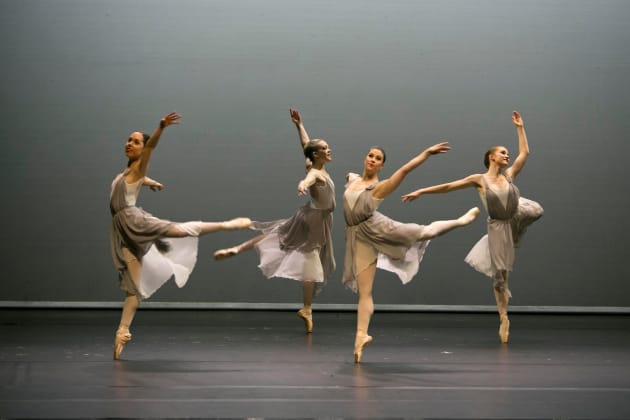DanceBourne Arts: Godai
Clock Tower, Moonee Ponds
August 12
DanceBourne Arts is a small independent company based in Melbourne that has been presenting work since 2015. It works on a collaborative model that sees a number of choreographers bring their distinctive practices together to form short cohesive programs. DanceBourne’s output is relatively small with only one season being shown each year.
DanceBourne’s most recent program responds to the Japanese spiritual system Godai that links the elemental forces of earth, water, fire, wind and void. Five short works interpret these elements charging each with specific qualities and utilising classical, contemporary and eastern forms of dance.
The momentum of this program develops gradually, starting with a short, delicate classical piece for four female dancers interpreting "wind" and moving through to the very dynamic endpoint of "void:. The latter was the highlight of the program. Choreographed and danced by Nakarin Jaikla along with Witchittra Changchaya, it combines the mesmerising power of traditional eastern movement forms with a really evocative original musical score by Numpark Sribanditmongkol.
"Void" commences with two veiled figures slowly walking the periphery of the stage to eerie music. They are soon joined by dancers representing other elements. Left alone, and unveiled, the movements of the two dancers are fluid and slow and our gaze is drawn to the fine movements of eyes, heads, fingers. The pace becomes more insistent and the movements larger and more volatile with sudden leaps erupting seamlessly from tranquil bodies. These movements evoke a dynamic martial arts practice. As the work moves toward its conclusion, a single male dancer in flesh-coloured tights is implicated in the dance. The implied nudity suggests possibly a neutrality, or perhaps an initiation into the power of the greater dance. The embodied tradition shown in "Void" that contrasts so strongly with the other more familiar classical and contemporary styles represented in the program casts a fresh light on our experience of what has gone before and strengthens the whole.
Another work that particularly resonated was Kathleen Skipp’s "Fire". Coming after the light swirliness of "Water", it brought a faster pace to the program and introduced some dynamic partnering and leaps as bodies emulate flame climbing higher. Starting with earth-bound crackles of incipient flame and developing into larger licks, the dynamic of this work builds.
The choreography in DanceBourne’s Godai program was meticulous and suited to its theme. Anne Butler’s "Wind" and Luanne Hyson’s Water demonstrated degrees of classical understatement and control. Hyson’s piece also had some lovely dynamic modulations, especially evident in Beatrice Ramsey’s solo. As a contrast, "Earth", by Rochelle Carmichael really worked with weight and forces that drew the bodies downward.
There are a couple of quibbles: a poem read off-stage as a prelude did not helpfully contextualise the program and was a far weaker element than the work it heralded. Also, all programs so far have featured a sole male dancer who is often somewhat peripheral in the choreography. I still have a somewhat uneasy or confused response to this. When he appears as a motif or symbol, separate from rather than integrated in the ensemble, this can appear awkward. In all, though, this was another well considered program by DanceBourne Art.
-- SUSAN BENDALL
Above: A scene from 'Wind', featuring dancers Madisson Salan,-Luanne Hyson, Beatrice Ramsay and Micaela-Kitching.
Photo: GAVIN D ANDREW



